Robotic kinematics
-
@tony73 I want to sort the ideas I had and delete the unsorted blogs:
- please don't feel obligated to build a worm drive now to help with building the prototype. The worm drive may not work, but getting experience with it is worthful of course.
- from my gear tests, I think it is best to use as big last wheel as possible, because of the forces involved and precision sideways, leading the arm into the intended direction and stability into the intended direction.
- counterweights should be avoided or they should be near the axis, for better acceleration and low wobbling, an exception will be axis 2, which has the burden of arms 2 to 5 and extruder and the biggest leverage
I've calculated all for a solution with belt based gears and found solutions where they are in balance when powered off. I build it now.
There are two robots which impress me and I'll try some of their ideas: Kuka KR 700 and bytronic 5ARA (UK company, R12 from ST Robotics similar).
-
@tony73 said in Robotic kinematics:
to use aluminum profile for box as proof
this is a good idea: using aluminium profiles for a part of the prototype. I have already many parts with wrong holes in it, the profiles will spare some money for testing where the holes shall be. I am currently using aluminium profiles to construct Axis 1.
I rebuilt axis 2, 3 and 4 yesterday, proceeding with axis 1, then finish the hotend.
-
@JoergS5
Hi! i looked at robot arm R12 and it looks great for using pulleys and belts! which one are you building the kuka kr 700 or R12? -
@tony73 I am trying the counterweight idea of R12. I install two steppers left of axis 3 for axis 3 and axis 4, and one big Nema 23 left of Axis 2 for axis 2. With the help of aluminium profiles it was very easy to install axis 1. Arm 2 length is 270 mm, arm 3 is 230 mm, arm 4 is 180 mm and arm 5 is 100 mm.
The Kuka KR 700 is similar to what I built to run in R1 mode without a stepper for Axis 4. This is useful for users who want to use 4 steppers for the axes and 1 stepper for the extruder, so in total 5, because the Duet boards often have 5 drivers (and according to the article which I mentioned somewhere above the precision is better).
-
@JoergS5
good morning! do you have photos to see the work you are doing? -
@tony73 at weekend I can post them.
I am sorry, I had to make a little creation pause to rethink the design ideas. But I promised an image, here it is:
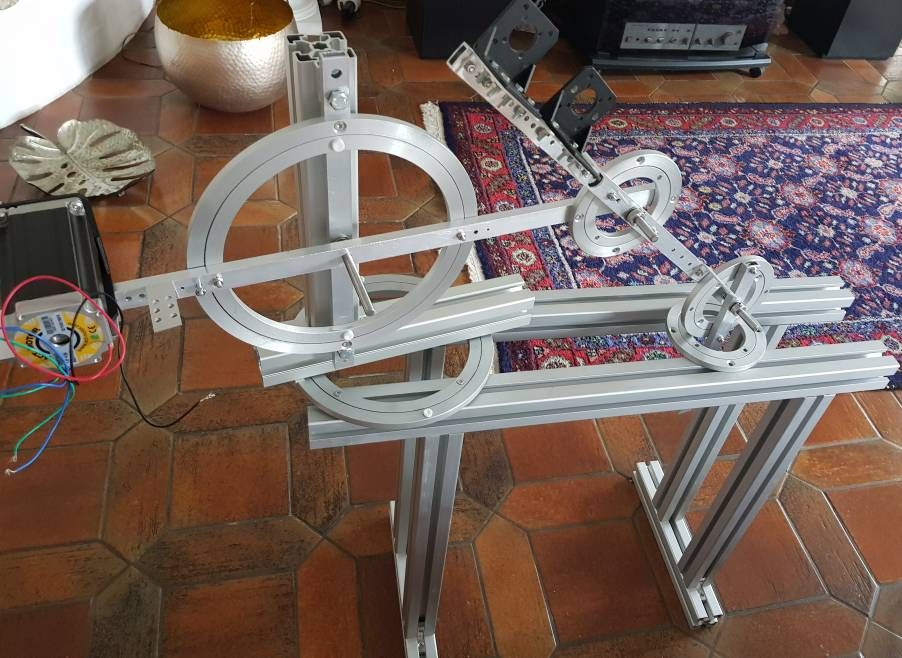
The weights are balanced, so the detent torque (torque of stepper when he is turned off) is higher than the arm falling weight. I am currently planning the gears near the rotation plate and a construction to fix the open belt at the rotation plate. Below the third little rotation plate will be installed the axis 5 stepper and the extruder+hotend.
The big rotation plate and axis 1 plate are 250 mm diameter (1:20 with 20 teeth pulley), the small ones 120 mm (1:8). The gears will add additional 1:2 (20/40) or 1:3 (20/60). Arm 2 is 270 mm (between the axes), arm 3 is 230 mm (between the axes), arm 4 will be about 180 mm. The Axis 2 stepper is Nema 23, but not because of force, but because of weight. Axis 3 and 4 steppers left of axis 3 are Nema 17. A disadvantage is that the belt for stepper 4 to axis 4 is long, the tension will be critical. The aluminium extrusions are all 45x45 format, the horizontal one is 70 cm long. print area will be larger than 40x40x40 cm.
Next tasks
- design gear with good belt tension
- fix open belt at rotation plate
- how to route wires and filament
- build axis 5 and extruder/hotend part
- install endstops
- three point calibration solution for axis 1
- starting a simple CNC machine to bore precise holes
I follow some design principles
- standardize the holes if possible to 1 cm / 2 cm raster (rotation plates have other distances of the holes as exception)
- modular as much as possible so the elements can be tested isolated
- as simple as possible, but at the same time as precise as possible
-
This post is deleted! -
@JoergS5
Hi! how is work on the robot? thanks for the preview photo! I have little time in this period, I would have changed my mind about the gearbox, I did a quick test and tried to do a harmonic drive the test is in nylon type material, the gearbox is 36/1 flexible bell 70 teeth, fixed gear 72 teeth . made with lathe and divider, the flexible bell is about 33 mm in diameter, if I can calculate the perfect size of the teeth, to have zero play, I will do everything in metal with subsequent hardening. 36/1 in M92 gives an even result, I remember you said it would reduce the margin of error! 200 * 36 * 16/360 = 320

-
@tony73 your harmonic drive looks promising. Using this gear type would be the best solution for the robot imho.
I have bought some used original ones, they have less teeth heights. I suspect this makes it easiert to flex the flexspine.
-
@tony73 my status is, I finished axis 3 and 4 with gear and fixing the open belts, here are images:
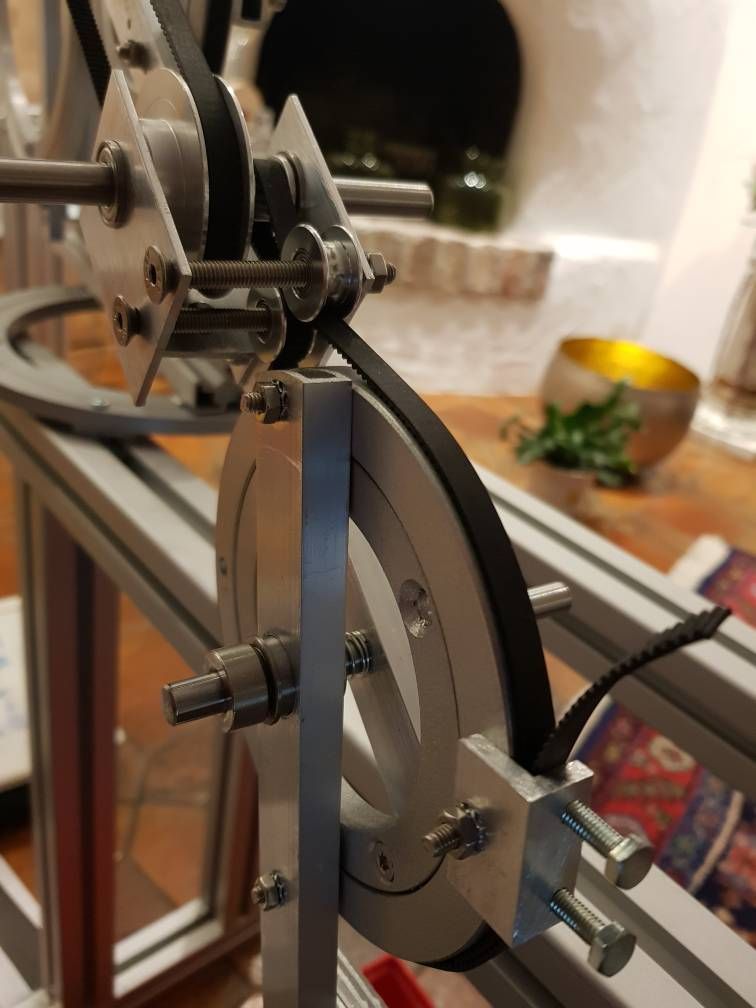
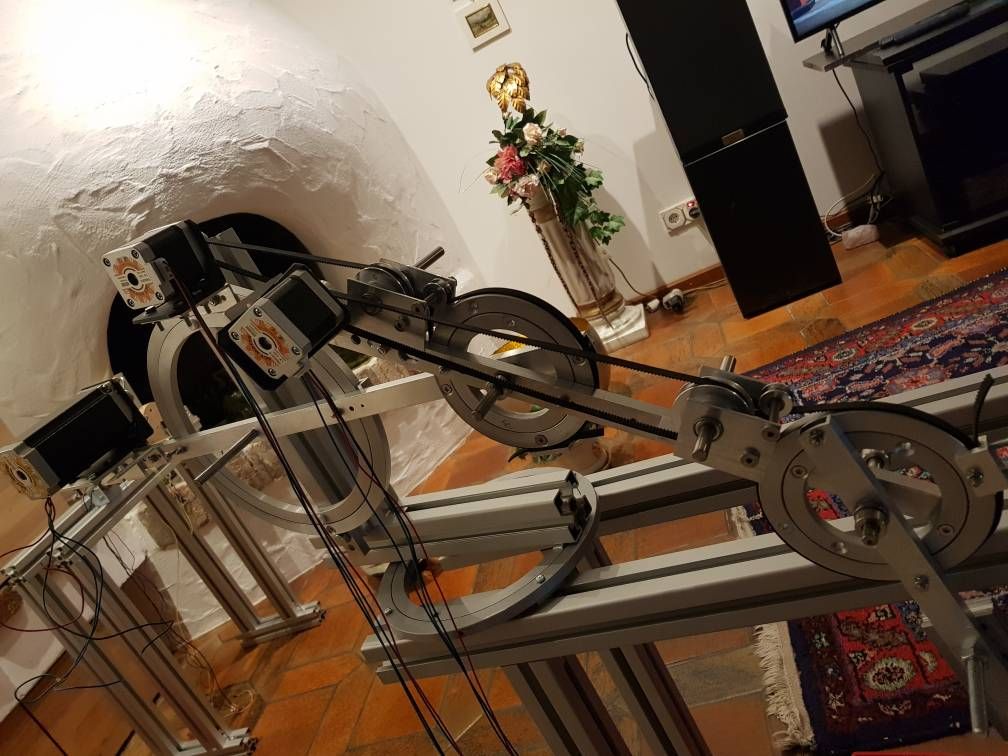
An open issue is how to get good belt tensions.
The arm balances are working good, protecting from falling. -
too long teeth and a fact that I had noticed too! the wave generator, it must definitely be less elliptical as possible! with shorter identi, let's say cut in the shape of a trapezoid, you can definitely make a wave generator not very accentuated more like a circle! groped to replicate it in steel and perhaps madness! but to have an experience and out of curiosity, I'll try! , About 2 years ago I had printed one in abs with a ratio of 35/1 for a neima 23, it works but in plastic you cannot expect to have a zero clearance! if I have not misunderstood! you bought one! do you have a front photo to see the teeth? anyway congratulations for the work on the robot! when do you think you can try it?
-
@tony73 I can make photos in a few days (should be possible during this week). I bought some harmonic drives used, but even used they are very expensive (not less than 200 EUR/$ each). It would be very good if you can build a good working harmonic drive!! I'll design arms, hinges, stepper positions in the third prototype for them. If you can make them with big diameter (range 70-100 mm diameter), this would give the arms good sideways precision. But to find the best method and properties, a 33 mm diameter is ok of course for the first 100 (
 ) iterations.
) iterations.Prototype 1: precision of the holes for the big wheels is very critical for smooth rotation, so I'll rebuild the arms, because I was not precise enough, they stuck at some angles. And axis5+extruder+hotend is open to be built. But no design problems are open, it "only" needs some time. Then I'll have the first prototype.
The belt gears are easy to produce, so it may be a good solution for someone who has no specific tools like routers, CNC etc. But the belts flex a bit, a harmonic drive would be much better.
I am prepared to build several prototypes to find the best solution and provide alternative build options. In the second prototype I'll try to build the smallest possible robot, based on Nema 8 steppers.
Current planning:
- 1: 45x45x45 cm build, belt gear based, low precision
- 2: as small as possible, belt gear based, maybe R1 mode
- 3: 45x45x45 cm build, harmonic drive based, high precision
- 4: as large as possible, testing bending parameters, for wall painting eg, rail support
-
@tony73 I think I was wrong with the teeth of the harmonic drive, here are the images of outer and inner ring. If you need to know the company, please chat me, I don't want to publish it here:
outer:
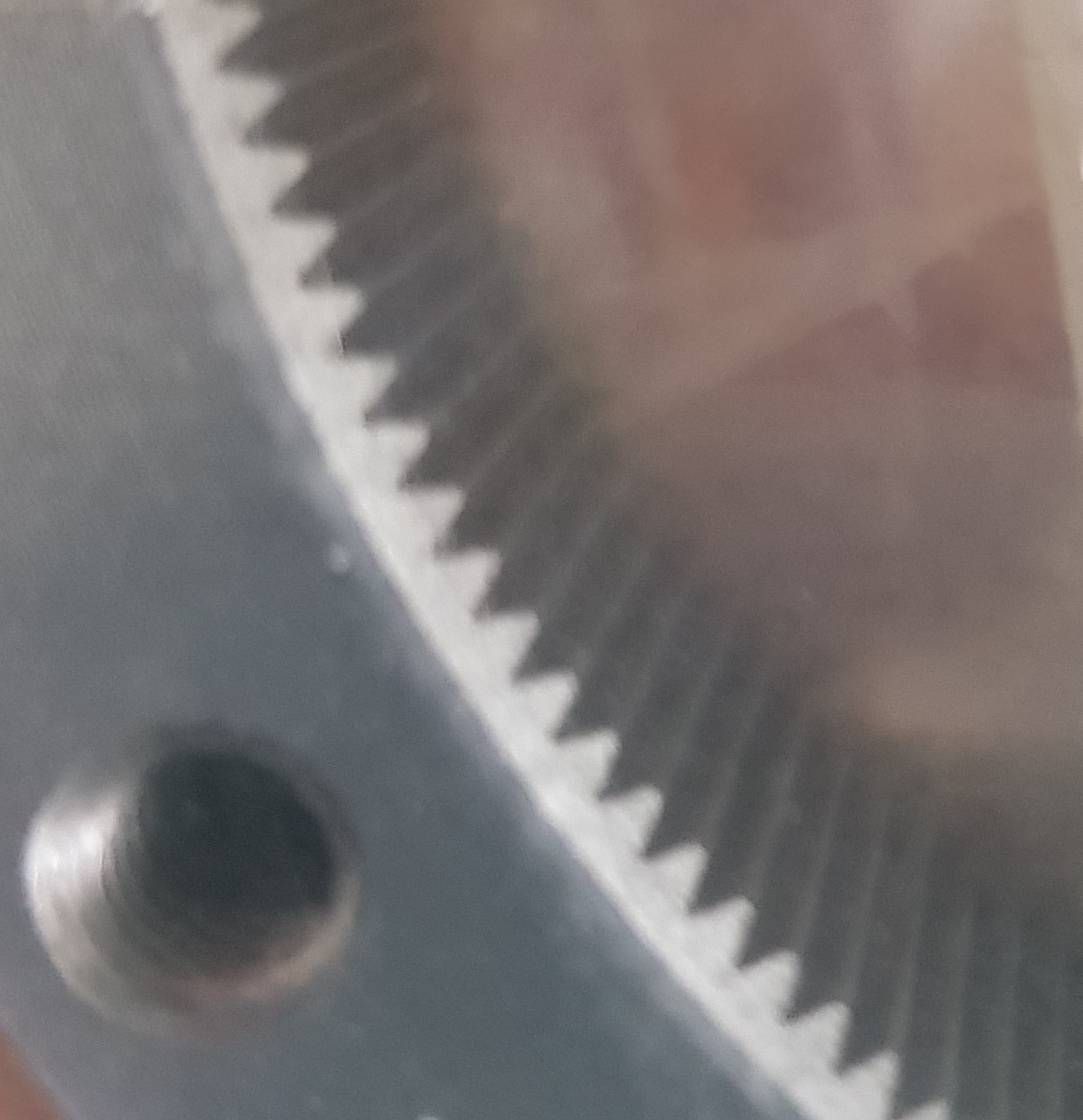
inner:
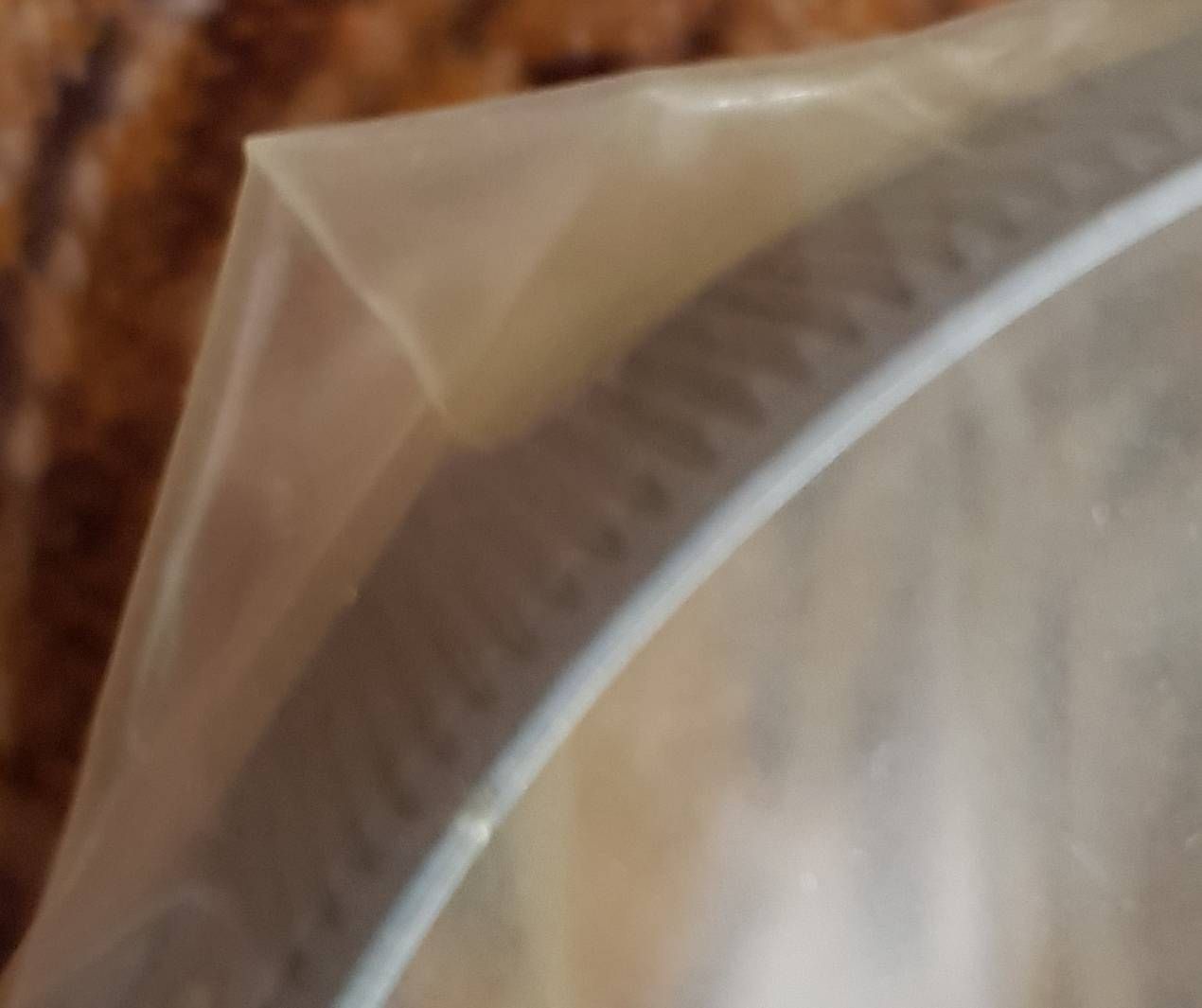
The quality of the images is not good, because they are in their original packaging, but I hope you can see the shape of the teeth.
It's a special kind of harmonic drive: two outer rings with teeth and one flexspline with only the ring (without the part at the side). It is used to adjust the angles of two axes (differential gear).
The company advertises that nobody was able to copy the quality, although the product is available since many years. So I expect that the teeth is not the important factor, because by buying one of it allows simple copying. I think important factors are
- material of the flexspline, being flexible, but at the same time can bend thousands or millions of time without going broken
- lubrication will be important also
- high precision of the parts
The material of Hylite could be a candidate for the flexspline, because it can bend may times. Hylite uses polypropylene. But abrasion could be too high.
-
This post is deleted! -
@JoergS5
Hi! how do i chat with you? I would like to understand how it is made ľ harmonic drive you bought! and complete with crossed roller bearing? as I said, replicating it in steel is madness! but not impossible! the tricky part will be hardening the flex spline and producing more than one harmonic drive in a reasonable time!
and like this?

-
@tony73 this is exactly the model I meant. It's the only one which I have opened, the other ones are closed, so it's not easily possible to show the teeth. But the differential gear are not meant for the robot. Maybe it's usable for robot, I'm not sure. The flexspline is easier to produce than the normal one, and there is no tension between the teethed part and the vertical part. I'll have to check whether I have the wave generator for this type. There is also a 2 part case around the parts of the picture.
The wave generator is normal ball bearing (unbalanced of course). Cross roller bearing was a separate idea, not harmonic drive, with something called ServoBelt Rotary, patented by Everman and a partner of him. ServoBelt Rotary would be a nice solution for Axis 1, harmonc drives more for axes 2 to 5. Axis 1 has the hole robots load vertical to the bearing, I expect the cross roller bearing better than the harmonic drive in respect to load. (But the ServoBelt has no gear inside, it may be better to use harmonic drive for all axes).
If you want to DIY the wave generator, please be aware that when buying balls, they have tolerance classes: G2/G3 best, G10 very good, G100 good quality, taking G10. Maybe it's easiest to produce a wave generator by bending a normal ball bearing a bit, with loadlifter.
The tolerance classes are inside one sample that you buy. E.g. buying 100 balls, they have tolerance G10. But buying another 100, they have only G10 to each other, not to the first sample. In other words: buy together what you need, and some more (I always loose balls when disassembling lol).
Chatting is done at the top menu, the bubble symbol. I prefer normal blog discussion, then everybody can see the information. But in this case it's an exception. To start a chat, open the profile of the other user, then the three dots ..., top entry is start a chat. I already sent you an information by chat.
-
@tony73 I found the wave generator now.
The diameter is between 60.6 and 62.0 mm, so only 1.4 mm difference. The balls are about size 6 mm (I cannot measure exactly).
The generator is built by two ball bearings, which are only connected by the axis.The flexspline teeth are total high 1.4 mm (including inner ring) for teeth high less than 0.7 mm, teeth distance 0.7 mm, so this fits good to the generator.
-
@tony73 https://www.bengtssons-maskin.se/uploads/extrafiles_file_2.pdf page 23 top is also a good idea, combining worm drive with a big wheel.
But if possible I would prefer harmonic drive because of the zero backlash.
-
@tony73 I found a scientific article about flexspline:
http://fluid.ippt.gov.pl/bulletin/(58-4)683.pdfmaybe of interest for you, what could be helpful for a longer life of the parts.
-
@JoergS5
good morning! how is the work on the robot going?